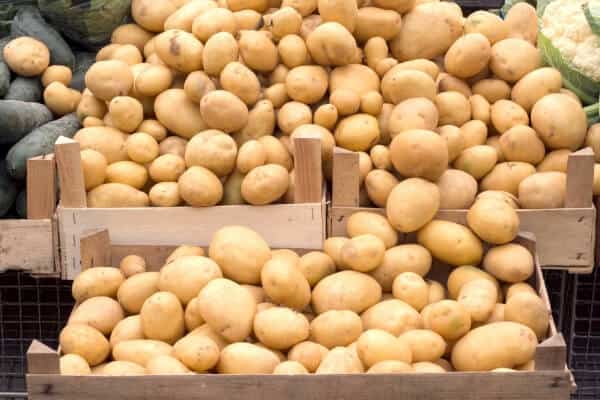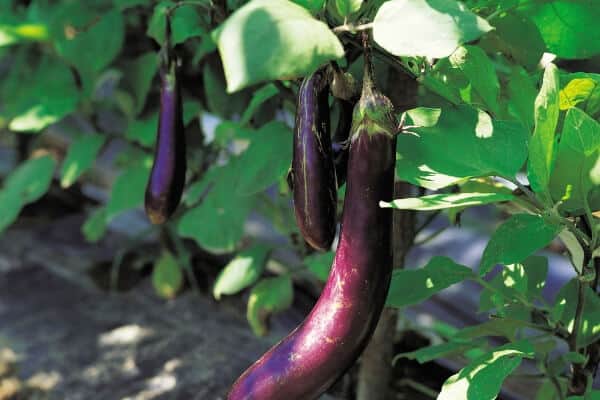Have you ever used companion planting in your garden?
By learning the principles of companion planting you can create a beautiful garden full of crops that can are mutually beneficial to each other.
This site contains affiliate links. If you make a purchase using one of these links, I may earn a commission. Please see my disclosure page for more information about cookies collected and our privacy policy.
They will work together to reduce pests, disease, and weeds while also increasing flavor, growth, and harvest!
The Complete Guide to Companion Planting in Your Garden
Companion planting has been used for hundreds and thousands of years. And while there are some naysayers who claim that companion planting has no scientific proof, there are hundreds of farmers who have experienced the benefits of companion planting in their gardens first hand.
So what is companion planting, and how does it work?
Pick up a copy of my Companion Planting Guide and Binder to help you design the perfect garden beds with companion planting in mind. It will help you harness the power of your plants to save time, reduce pests, and increase yields!
What is Companion Planting?
Companion planting is a gardening wisdom that has says that when certain plants are grown together, you can get increased yields, better flavor, less disease and fewer pests.
It is a time honored way to grow an organic garden without having to resort to fertilizers and pesticides.
For example, let’s say you are talking about tomatoes. Maybe you have trouble with aphids or spider mites on your plants each year. This is your host plant.
You would choose a companion plant (or 2) that helps deter these pests away from your tomatoes. You can also choose a companion plant that helps improve the flavor of your tomatoes too.
How Does Companion Planting Work
As in my example above, companion planting works in a variety of ways. Here are just a couple:
Attract Beneficial Insects
Companion plants will attract beneficial insects to your garden.
This includes predatory insects and parasitic wasps that will feed on garden pests such as squash bugs, aphids, hornworms, and more.
The companion plants will also attract pollinators. And we all know you won’t get much of a harvest without pollinators!
Learn more about 9 Beneficial Insects you want in your garden and how to attract them.
Changes in the Soil
Different plants can either add or take away elements of the soil.
Such as green beans, peas, and other legumes are nitrogen fixing and help make nitrogen more readily available for heavy feeders.
Root vegetables can help break up the soil and plants with longer roots can draw more nutrients up for crops with shallow roots.
Companion planting can help provide living mulch to prevent erosion and conserve soil moisture.
Trap Cropping
Many benefits of companion planting revolve around organic pest control. One way to control pest is by using trap crops.
Trap cropping works by planting more favorable crops to deter pests away from your prized vegetables. The garden pests are draw to the trap crop instead of your vegetables.
As long as you harvest and destroy the most infested parts of the trap crops periodically you can effectively keep pests under control.
Learn more: How to Use Trap Crops in the Garden
Repel or Deter Garden Pests
When you companion plant strongly scented plants, like onions or garlic, nearby you can help repel common garden pests. This works by confusing the sense of smell of the insect, making it harder to them to find the host plant.
Some companion plants mask the odor of the host plant and some companions are offensive to the pest and they won’t come near enough to chew on the host plants.
There are even some companion plants that can cause physical reactions such as paralysis in pests, making them easier prey for you or predatory insects.
Save Space and Time
Companion planting also can save you space and time.
When you plant crops that don’t compete for nutrients you can place them closer together without overworking the soil.
This also works with similar crops, like peppers and tomatoes, which have the same sun, soil nutrient, and care requirements. Planting them together will allow you to prepare the beds and care for them efficiently.
For example you can plant lettuce and spinach under and around pepper plants. Their roots won’t compete, peppers will offer the greens shade on warm days which will extend the season, and greens will provide mulch and humidity that peppers love.
Good Companions or Bad Companions?
So now that you know how companion planting works and why you it’s beneficial, how do you know what plants combinations work and which ones don’t?
For a general list of companions, download a copy of my companion planting chart. Click on the image below to fill out the form and I’ll send it right over:
For more in depth information on companion planting with many common garden crops, check out the companion planting guides below:
Every plant has different likes and dislikes. Take a look at the articles below to find out more about the specific companion planting needs of some of the common garden crops and how to use companion planting for pest control. Tomatoes are one of the most popular crops in backyard garden. Click below to learn which plants make good companions for tomatoes to improve flavor and growth. Cucumbers are one of my favorite summer crops. Click below to learn how to companion plant with cucumbers to increase your harvest and reduce pests. Do you love fresh hot or sweet peppers? Did you know that peppers don't like to be planting near beans? Click below to find out how to use companion planting to grow better peppers. One of the most famous ways of companion planting with corn is the 3 sisters garden. Click below to learn more about this method as well as other companion plants for corn to help with pests and disease. Garlic is a great companion for many crops in your garden. Click below to see the best companions for garlic and what you should plant separately. Okra is a heat-loving crop that is a staple in many southern gardens. Okra doesn't have many-or any- BAD companions, but here's a list of the best companion plants for okra. Did you know that beans and potatoes have a mutually beneficial relationship? Click below to learn which plants grow well with potatoes and which ones don't- including plants to deter the Colorado potato beetle! Do you struggle every year to keep the squash bugs away from your squash plants? Learn which plants can help deter the squash bug and how pair plants for better squash growth! Learn which crops are the best cabbage companion plants to increase your harvest, reduce pests, and improve cabbage flavor. Did you know that fennel will stunt the growth of many plants, including eggplant? Click below to read more about what to grow with eggplant for better health and growth and less problems with pests. Basil is an easy to grow herb that pairs well with many vegetables and herbs. Here are the best plants to companion plant with basil. Asparagus is a perennial plant that keeps giving harvests year after year. Click below to learn which plants you can grow in your asparagus bed Onions are a great companion for many garden crops and can help repel all sorts of pests. Click below to keep reading about the benefits of companion planting with onions- and which companions help your onions grow better too! Aphids can cause big problems in the garden. They not only feed on your plants but carry destructive diseases. Click below to read more about the 9 companion plants you can use to repel and control aphids in the garden. Companion planting is great for controlling unwanted pests in the garden. Click below for an easy-to-read list of 16 different ways to use companion plants to control pests naturally. Herbs definitely have a place throughout the vegetable garden. Learn about the top 15 herbs- both annual and perennial- that are great companion plants for your vegetable garden. In Depth Companion Planting Guides
The Best Tomato Companion Plants For Your Vegetable Garden
The Best Companion Plants for Cucumbers in the Backyard Garden
The Best Companion Plants for Peppers in Your Backyard Garden
The Best Corn Companion Plants For Your Vegetable Garden
The Best Garlic Companion Plants For Your Garden
The Best Okra Companion Plants for Your Vegetable Garden
The Best Potato Companion Plants for Your Backyard Garden
The Best Squash Companion Plants for Your Backyard Garden
Best Cabbage Companion Plants in the Vegetable Garden
The Best Eggplant Companion Plants for Your Backyard Garden
Best Basil Companion Plants for Your Backyard Garden
The Best Asparagus Companion Plants for Your Vegetable Garden
The Best Onion Companion Plants for Your Vegetable Garden
How to Control Aphids: 9 Companion Plants That Repel Aphids
16 Way to Use Companion Planting to Control Pests Naturally
Companion Planting with Herbs in the Vegetable Garden
Have you used companion planting in your vegetable garden? Share your experience in the comments below!























Sarah,
This blog is great keep it up! love it.
Please send me your companion plant guide. Thank you
A copy of your companion plant guide.
Thanks
Interested in the companion planter.
Good Companions or Bad Companions?
I would love a copy for the companion plants chart!
First year doing a huge garden :)
Thanks for the article as well! It was very informative!
Very informive
Please send me your companion guide…..you have such helpful information!
Please send me your companion guide! This is the final piece I need to organize my garden. Thank you!
Please send me a companion list.
Please send me companion list…..thanks
I would love to see your companion planting guide if you could send it to me!
Your Binder is sent to my house right ?
No, as stated, it’s a digital product